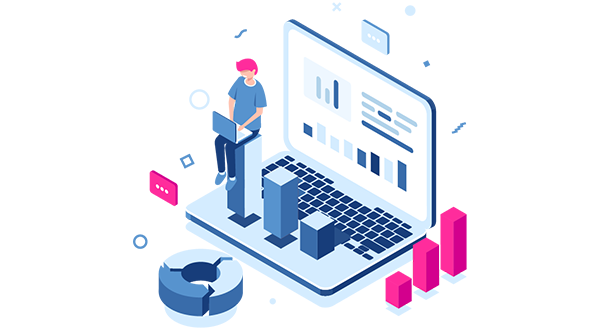

mLogica Thought Leaders: Transforming Health Care Informatics via Mainframe Migration to the Cloud

Dr. Vazi Okhandiar, mLogica V.P. of Engineering
Health care is one of the most vital and fastest-evolving industries. It’s also the sphere in which leading edge technology is truly a matter of life and death. Thus mainframe migration to the cloud has become a crucial precursor for a full-scope implementation of healthcare informatics.
As defined by the U.S. National Institutes of Health, healthcare informatics seeks to optimize medical data “for scientific inquiry, problem-solving [and] decision making...” A successful informatics initiative requires state-of-the-art technology, near-real-time access to all types of healthcare and medical data worldwide, and an analytics platform that can transform the data into actionable and shareable insights.
The benefits of migrating mainframes to the cloud to support healthcare informatics in both private and public sectors include:
Security and Compliance
In the healthcare sector, few imperatives are higher than the need for patient data security and regulatory compliance. With the sharp rise in cyber threats, migrating mainframes to the cloud allows private and public sector to leverage state-of-the-art cloud security capabilities on day one.
Cloud platforms such as AWS, Google, Microsoft Azure, Oracle and more spend billions every year on security and thus are able to provide comprehensive encryption, 24/7 system monitoring and stringent, customizable user access controls on demand. In addition, their compliance frameworks make it easier to adhere to regulatory standards, including the U.S. Health Insurance Portability and Accountability Act (HIPAA). Thus through mainframe modernization to the cloud, healthcare organizations can lock down their security frameworks, minimize attack surfaces and accelerate compliance procedures to secure patient data.
Scalable Infrastructure to Enable On-Demand Data Analytics
Healthcare technologies such as electronic health records (EHR) and medical imaging devices produce huge amounts of patient data daily. This requires scalable computing resources for immediate analysis and dissemination of critical information. Cloud platforms’ autoscaling feature enables healthcare organizations to scale resources up and out dynamically in response to demand spikes.
In addition, providers and public agencies also frequently need to intake and manage enormous datasets to address topics such as population health management, personalized medicine and genetic research effectively. Therefore, private and public sector organizations that rely on healthcare informatics can benefit from leading-edge data analytics on demand by migrating their applications and databases to the cloud. The ability to immediately deploy the computing resources required to process and gain near-real-time insights from such large and diverse datasets is a game-changer for both organizations and their client bases.
Artificial Intelligence and Machine Learning Facilitate More Effective Care Strategies
Machine learning (ML) and artificial intelligence (AI) have critical applications in the healthcare sector. Cloud platforms provide the computing and storage capacity to process enormous datasets and train complex AI models.
Informatics can easily leverage cloud-based AI and ML to analyze medical images, identify patterns, support diagnostic and decision-making processes and predict future health trends and patient needs. Thus, migration of mainframe-based systems to the cloud helps companies and agencies rapidly integrate and deploy AI models, leading to more accurate forecasting, diagnostics and treatment delivery.
Systems Integration and Interoperability
Data silos are still the bane of healthcare informatics, since storing records and information in different systems and platforms makes them inaccessible to many organizational users. Migrating mainframes to the cloud enables interoperability by creating an integrated environment for processing and storing shared data.
The standardized APIs (application programming interfaces) offered by cloud platforms enable integration with multiple healthcare systems, streamlining access to crucial patient information, facilitating data sharing between providers, and supporting coordination of care. In this way, cloud-based mainframe modernization helps healthcare organizations break the walls that block access to patient data and build a coordinated, collaborative diagnosis and pathology process.
Facilitating Enhanced Research and Development Practices
Global data exchange and analysis are necessary for medical research and projects that drive diagnostics, pathology and treatment developments. Cloud-based healthcare systems create a consolidated, readily available data-sharing platform, promoting collaborative medical research.
Using a cloud-based healthcare system, researchers and medical professionals can work together in real time, exchange ideas and share insights into groundbreaking discoveries. This collaborative approach results in improved treatment protocols, pharmaceutical development and care delivery—driving innovation in healthcare solutions worldwide.
Improved Informatics Means Saving Lives
Cloud migration of mainframe-based healthcare systems offers a critical breakthrough in the potential of healthcare informatics, since cloud capabilities continue to revolutionize how private and public sector organizations use that technology to support patient care and enhance business processes.
On the business side, leveraging cloud-native technologies to strengthen security and compliance and enable interoperability drives revenue and streamlines operations. Meanwhile, advanced analytics combined with AI and ML for diagnostics, collaborative research and development work synergistically to support the mission of all healthcare organizations: to cut costs, enhance patient and provider experience—and most importantly, to save lives.








































